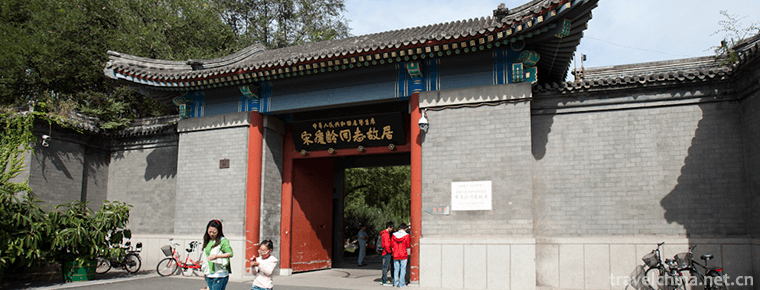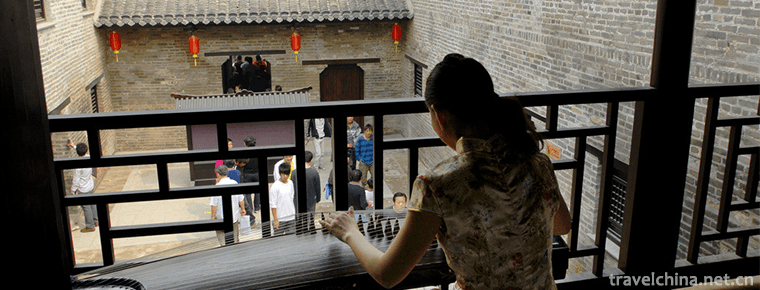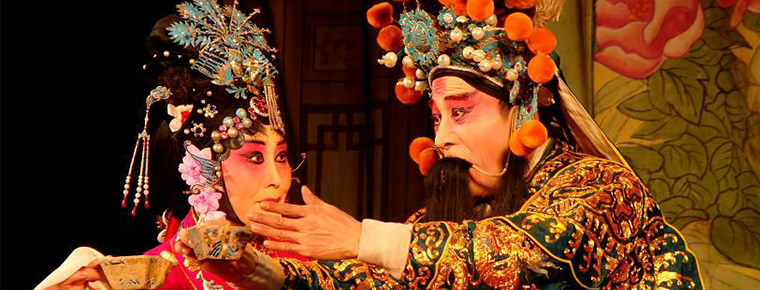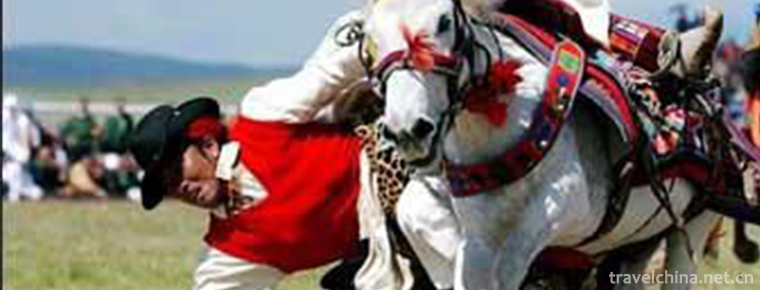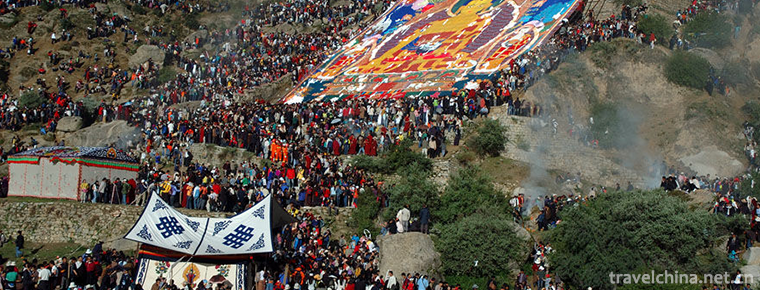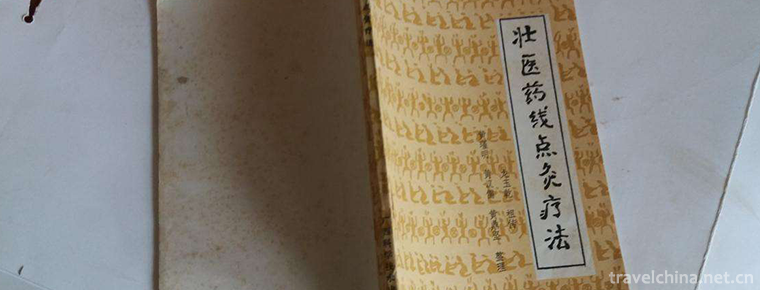The game of go
The game of go
Go is a strategic two-player game. It was called "game" in ancient China and "Go" in the West. Popular in East Asian countries (China, Japan, Korea, Korea), is one of the four arts of qin, chess, calligraphy and painting. Weiqi originated in China and was handed down by Emperor Yao. It was recorded in the Spring and Autumn Period and the Warring States Period. In Sui and Tang Dynasties, it was introduced into Japan through Korea and spread to Europe and America. Weiqi contains rich connotations of Chinese culture, which is the embodiment of Chinese culture and civilization.
Go uses square checkerboard and black-and-white dichroic round chess pieces to play games. There are 19 vertical and horizontal lines on the chessboard, which divide the chessboard into 361 intersections. The chessboard moves at the intersection point alternately between the two sides, and can not move after falling. The majority of the enclosures win. Because the black side takes advantage of the black side first, it is artificially stipulated that the black side should post to the white side at the end of the game. In ancient China, the black and white sides put two pieces (diagonal star layout) in the diagonal position, which is a sign system, and the white side takes the lead. Modern Go cancels the rules of seats, black first and white later, making the changes of Go more complex and changeable. Go is also considered the most complex board game in the world.
History
origin
Weiqi, originated in China, is called "game" in ancient China. It can be said to be the originator of chess. Weiqi has a history of more than 4000 years. According to the pre-Qin classics Shiben, "Yao made Go, Danzhu Shanzhi." Jin Zhanghua inherited and developed this statement in the History of Museums: "Yao made Go to teach his son Danzhu. Ruobai: Shun is foolish with his sons and businessmen, so he makes Weiqi to teach it.
The 1964 edition of Encyclopedia Britannica adopted this idea, even dating it to 2356 B.C.
The original game written by Pi Rixiu, a poet of the Tang Dynasty, holds that "the beginning of the game must start from the Warring States Period, and the way of harmful fraud and falsehood should be carried out in a horizontal and vertical way." What is Yao Yao! "
Chen Renxi of Ming Dynasty put forward "Wucao Zuobo, Go" in "The Class Book of Potential Confidence". According to legend, Wu Cao was Yao's minister, and some people said that he was Xia Jie's minister. Later, Dong Sizhang's "Wide History" and Zhang Ying's "Yuanjian Classification Letter" also adopted this statement.
Lin Yinglong of the Ming Dynasty believed that Go was invented by Rong Chenggong in Shi Qinglu. According to the biography of Lixian, Rong Chenggong claimed to be the Yellow Emperor's Teacher. He saw King Zhou Mu and was good at counseling.
Development
The Spring and Autumn Period and the Warring States Period
Go was now widely spread in society. "Zuo Zhuan Xianggong Twenty-five Years" contains: "Wei Xianggong Yiyi Envoy and Ning Xiyan, Ning Xiyu. Uncle Wenzi smelled it and said,'Whoo... How can Ningzi avoid playing chess instead of looking at the monarch today? The players are uncertain and can't overcome their coupling, but they can't settle for the king. It's inevitable!'" This is the first reliable record of Weiqi in history, dated 548 B.C. Confucius wrote in The Analects of Confucius Yang Goods: Confucius said, "It's hard to be full all day long and have no intention. Is there no game player? It's a virtuous thing to do."
Mencius's "Mencius Lao Zi" contains: "Today's husband's number of games, decimal also. If you don't concentrate, you can't. The autumn game is also a good game for the whole country. One of them concentrates on the game and listens to it; one listens to it and thinks that a great bird is coming and shoots it with the help of his bow. Although they all learn from each other, there is no such thing as that. Why is it Zhifuruo? "No," he said. This is the first professional chess player with a name in the historical materials, Qiu Qiu.
The Three Kingdoms of Qin and Han
Qin destroyed six countries and unified the world. There are few records of Weiqi activities.
At the beginning of the Eastern Han Dynasty, the society was still in a state of "exposition in the world and playing alone". It was not until the middle and late Eastern Han Dynasty that Weiqi became popular again.
Ge Hong, Jin Dynasty, "Miscellaneous Records of Xijing" Volume 2: "Duling Dufuzi is good at chess, the world's first. When a man mocks him for taking time, the Master says, "A good man is enough to benefit the Holy religion."
Volume 3: "Mrs. Qi waited on Emperor Gao... On August 4th, the north door of the carving room, playing Go with bamboo, the winner is blessed all the year round and the loser is sick all the year round. Take the threads and ask for a long life from the North Star.
In 1952, archaeologists found a stone Go board in the tomb of the Eastern Han Dynasty, Wangdu No. 1 in Hebei Province. The board was square, with four feet under it and 17 paths in length and breadth, which provided the material material material for the shape of the Go board in the Han and Wei Dynasties. Connected with the frequent wars in the Han and Wei Dynasties, the war of Go has also become an important tool for training military talents. Ma Rong in the Eastern Han Dynasty regards Go as a small battlefield and Weiqi as a battle field for soldiers. "A three-foot game is a battlefield; Chen Jushi is a soldier, and the two enemies are equal." At that time, many famous militarists, such as Cao Cao, Sun Ce and Lu Xun in the Three Kingdoms, were outstanding in the two battlefields of frontier and chess player. Wang Can, one of the famous "seven sons of Jian'an", is not only famous for his poems, but also an expert in Go. It is said that he has an amazing memory. He knows how to play Weiqi and how to play it. He can play the bad game again and make a good one.
There have been two important changes in the system of Chinese Go in history, mainly due to the increase of game rules. Around the Wei and Jin Dynasties, it was the first time that important changes took place. Wei Handan Chun's "Book of Arts" said that the Wei and Jin Dynasties and their previous "chess game vertical and horizontal 17, 289, 150 white and black pieces each". This is exactly the same as the game system of Go in the Eastern Han Dynasty, which was found in Wangdu, Hebei Province. However, the Chess Classic of the Northern and Southern Dynasties discovered in the Mogao Grottoes Grottoes in Dunhuang, Gansu Province, shows that the chess game at that time was "360, imitating the degree of Zhou Tian". It shows that 19 routes of Go have been popular at this time. This is exactly the same as the shape of the game, reflecting that Weiqi at that time had preliminary customization.
The Northern and Southern Dynasties
Because of the rise of metaphysics in the Northern and Southern Dynasties, scholars took pride in chatting, so the style of playing chess became more prosperous, and playing Go was called "hand talk". The upper rulers are also good at playing chess. They set up officials with chess and set up a system of "chess goods". For those "chessmen" who have a certain level, they are awarded the same "character" (grade) as the chess art. At that time, the chess art was divided into nine grades. In the biography of Liu Yun in Nanshi, it was stated that "Emperor Liang Wudi was good at playing games, which enabled Yun to determine chess scores, and the number of deniers was 278". This shows that chess activities were widespread. This is why Japanese Go is divided into nine segments.
Sui, Tang, Song and Yuan Dynasties
19 chessboards have replaced 17 chessboards in the past, and 19 chessboards have become the mainstream since then. With the foreign policy of the Sui Empire, Koguryo, Sino-Luo and Baiji brought Go to the Korean Peninsula and sent Sui envoys to Japan.
Tang and Song Dynasty can be regarded as the second significant change period of Go recreation in history. Because of the love of emperors and other reasons, Weiqi has made great progress, and the game has spread all over the country. At that time, Weiqi was not only its military value, but also its cultivation of sentiment, pleasure of body and mind, and growth of wisdom. Chess and playing the piano, writing poems and painting have been cited as elegant things, and become entertainment items suitable for both men and women, old and young.
The silk painting "Ladies'Chess Picture" unearthed in Tang Tomb No. 187 in Astana, Turpan, Xinjiang, is the image depiction of aristocratic women playing chess at that time. At that time, the chess board had 19 main shapes, and the Go pieces had been changed from square to round. In 1959, the porcelain Go board unearthed from Zhangsheng Tomb of Sui Dynasty in Anyang, Henan Province, was presented to Emperor Xiaowu of Japan in Tang Dynasty, and the ivory Inlaid pliers wooden Go board in Zhengcang Courtyard of Japan now in Tibet, all of which were 19 vertical and 19 horizontal. The collection of black-and-white round Go pieces in Tang Dynasty in China Sports Museum and 50 black-and-white round chess pieces unearthed from Yang Gongzuo's tomb in Huai'an Song Dynasty reflect the changes and development of Go in this period. The implementation of the Tang Dynasty's "chess pending edict" system is a new symbol in the history of Chinese Go development. The so-called chess to be ordered is a professional chess player who accompanied the emperor in Tang Hanlin Academy. At that time, all the chess players who worshipped Netting were selected after strict examination. They all have high chess skills, so they are known as "national players". In Tang Dynasty, there were famous chess pending edict, such as Wang Ji-qian in Tang Xuanzong, Wang Shuwen in Tang Dezong, Gu Shiyan in Tang Xuanzong and gliding energy in Tang Xinzong. Because of the implementation of the pending system of chess, the influence of Go has been expanded and the social status of players has been improved. This system lasted for more than 500 years from the early Tang Dynasty to the Southern Song Dynasty, and played a great role in promoting the development of Go in China.
Beginning in the Tang Dynasty, Weiqi gradually went abroad with the exchange of Chinese and foreign cultures. First of all, Japan sent the Tang Dynasty delegation to bring Weiqi back. Weiqi soon spread in Japan. Not only have many famous Go players emerged, but also the production of chess pieces and chess games is very careful. For example, in the second year of Tang Xuanzong's middle school (848), the Japanese prince who came to Tang Dynasty to pay tribute brought a chess game which was carved out of "pulling jade", while the chess pieces were made of "jade" in the hand-talked pool on Jizhen Island. Besides Japan, Baiji, Koryo and Sino-Luo on the Korean Peninsula also have contacts with China, especially Sino-Luo sent envoys to Tang Dynasty many times, and the exchange of Go is more common. "New Tang Shu Dongyi Biography" describes the game between Yang Jiying, a great chess player in Tang Dynasty, and Xinluo's chess players, which shows that Xinluo's Go had a certain level at that time.
Ming and Qing Dynasties
In the Ming and Qing dynasties, chess skills were rapidly improved. One of its manifestations is the upsurge of schools. During the reign of Zhengde and Jiajing in the Ming Dynasty, three famous Weiqi schools were formed: one was the Yongjia School crowned by Bao Yizhong (Yongjiaren), the Yongjia School crowned by Li Chong, Zhou Yuan and Xu Xishengfu; the other was the Xin'an School crowned by Cheng Ruliang (Xin'an), Wang Shu and Fang Ziqian; the other was the Jingshi School crowned by Yan Lun and Li Pu (Beijing people). These three schools have different styles and different layouts of attack and defense, but they are all famous players at that time. Driven by them, Weiqi, which had long been monopolized by scholar-bureaucrats, began to develop among the citizens and emerged as a group of "insider" players. Through frequent folk competition activities, Weiqi recreation has been further popularized. With the flourishing of Weiqi recreational activities, more than 20 Ming versions of Weiqi score compiled by some folk chess artists have emerged, such as "Suitable Emotions", "Shishi Xianji", "Sancai Picture Huiqi score", "Xianji Wuku" and "Game History", "Game Question", which are all valuable writings, from which we can see the high development of Weiqi skills and theory at that time.
Manchu rulers'absorption and advocacy of Han culture also made Weiqi recreational activities highly developed in the Qing Dynasty, with numerous famous players and unprecedented prosperity of Qiyuan. At the beginning of the Qing Dynasty, there were a number of famous players, most of whom were Guo Bailing, Sheng Dayou and Wu Ruicheng. Especially Guo Bailing's "Four Genealogy" Volume 2, which changed the method of the old genealogy of Ming Dynasty, elaborated and elaborated to the best of its meaning, became a masterpiece. From the end of Kangxi to the beginning of Jiaqing in the Qing Dynasty, game learning became more flourishing, and a large number of famous players emerged in the chess circle. Among them, Liang Wei-jin, Cheng Lanru, Fan Xiping and Shi Xiangxia are known as the "Four Great Masters". Among the four, the Qi style of Liang, Wei and Jin was so changeable that Shi Xiangxia and Fan Xiping benefited a lot from it. Both Shi and Fan are from Haining, Zhejiang Province. They are also famous as teenagers and are known as "Haichang Ermiao". It is said that when Shi Xiangxia was 30 years old and Fan Xiping was 31 years old, they played in Danghu, and after 10 rounds of fighting, they won or lost the same game. "Ten games of Danghu" has become a masterpiece that has been circulated for thousands of years.
spread
After the mid-19th century, Japan's Go level caught up with China, and in the next 100 years, China was far behind.
The exchanges between China and Vietnam can be traced back to the Qin and Han Dynasties, when Toe Prefecture was handed over in the Western Han Dynasty, covering most of Vietnam. Since then, Vietnam has been influenced by Chinese culture for a long time. The spread of Go in Vietnam has not been recorded in historical records, but it is estimated that it will not be later than the 12th century. From Yuan to Yuanzhong (about 1280), Xu Mingshan was sent to Annan (Vietnam). In Annan, he once watched the local noble sons play chess and wrote a poem entitled "Annan Spring Night Chess for the World". There are "Lucang Courtyard, Yuejuan, people have a day in the pot. The words of "all in one red candle bottom, all in one heart traveling on the edge of the blue sky" show that Vietnamese Go was very popular at that time, but also very elegant interest.
During Zheng He's voyage in the Ming Dynasty, he saw the popularity of Go in Southeast Asian countries. For example, Ma Guan, who recorded the scenery along the way, said, "The Three Buddhas and Qi are good in national customs..." Chess." Sanfoqi is part of Indonesia. This shows that go was popular in Southeast Asian countries at least until the Ming Dynasty.
There are different opinions about the time when Go was introduced to Europe, which is generally considered to be in the middle of the 17th century. For quite a long time, many Europeans thought Go was invented by the Japanese. Later, they gradually learned that Weiqi actually first appeared in China.
Modern and Contemporary
After the Meiji Restoration of Japanese Go, chess players lost the support of the shogunate and began to seek new means of livelihood, resulting in the emergence of news chess warfare and modern segment system, and the creation of a national Japanese chess academy. In Zhaohe era, Wu Qingyuan and Mugushi jointly set off the trend of "new layout" and began the era of modern Go. Later, the first-class players in Japanese chess circle emerged, such as Rongman Sakata, Hideo Fujizawa, Takagawa Ge, and later heroes of Takeshi, Masahiko Takeshi, Kobayashi Kobayashi, and Fangfu Ishida.
After the founding of the People's Republic of China in 1949, the level of professional Go in China was quite low. Since 1960, Sino-Japanese Go Friendship Competition has been held every year. Among them, the 55-year-old Ito Youhui Wuduan (female) of the second Japanese Go delegation visiting China in 1961 swept the top Chinese chess players at that time and won all eight rounds. In 1964, it was renamed the Sino-Japanese Go Competition and held until 1991. In 1984, the first Sino-Japanese Go Racing Competition opened, opening the prelude of Sino-Japanese Go Exchange. Nie Weiping, a Chinese, won 11 consecutive victories in the first three Wutai competitions, which greatly promoted the popularity of Chinese Go.
On April 16, 1988, the State Sports Commission of China issued the National Segment Standard of Go, the Rules for the Implementation of National Segment Standard of Go and the Local Segment System of Go.
In 1988, Korean Cao Xunhyun won the first Ying's Cup World Go Championship, which also triggered a wave of Korean Go. Since then, a large number of world news chess wars have emerged. In these chess battles, Li Chang-ho emerged from many players and became the first person in the chess world at that time. After 2004, Li Chang-ho's condition declined, and new and cutting-edge forces such as Li Shishi and Guli began to attack him.
In 2013, many Chinese chess players rose, including Jiang Weijie, Fan Tingyu, Shiyue and other young chess players who successively won the world championship. Yan Yuting, Chen Yaoye, Zhou Ruiyang, Tan Xiao and other chess players were brilliant and talented.
In the man-machine war of Go held from March 9 to 15, 2016, the artificial intelligence program "Alpha Go" developed by Google beat the world champion and top Korean player Li Shishi Jiuduan by 4:1, showing the trend of catching up with human beings in Go. At the beginning of 2017, the upgraded version of Alpha Go defeated the pack on many online Go platforms with the mysterious account of "Master". Dozens of top Chinese, Japanese and Korean Go players, including Nie Weiping, Ko Jie, Park Tinghuan and Jingshan Yutai, won the 30-second fast chess match with a score of 60:0, triggering a heated debate.
Weiqi has spread all over the world, but mainland China, Hong Kong, Taiwan, Japan and Korea are the most prosperous; western countries have become increasingly popular; and Southeast Asia is developing. As of 2017, China and Korea had the highest professional level of Go. South Korea is losing ground in the war against China, while Japan is no longer able to compete with China and South Korea.

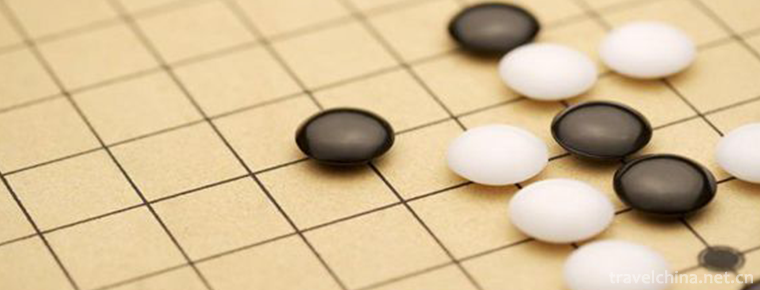
-
Harbin Amusement Park
Harbin amusement park is located at the junction of the outer Road area and Nangang District. It was founded in 1958. Originally known as Harbin Cultural Park, it covers an area of 22.8 hectares..
Views: 109 Time 2019-01-13 -
Memorial of Song Qinglings Former Residence in Shanghai
Song Qingling's former residence in Shanghai is the place where Song Qingling lived and lived for a long time. Qingling came to live here in the spring of 1949 and ushered in the liberation of Shangha.
Views: 154 Time 2019-02-13 -
Yao Wan ancient town
Yaowan Ancient Town is located in the southwest edge of Xinyi City, Xuzhou City, Jiangsu Province, at the junction of Beijing-Hangzhou Grand Canal and Luoma Lake, and is connected with Suqian, Suining.
Views: 224 Time 2019-03-03 -
Changzhou comb
Comb, also known as Chlamys, is one of the eight hairdresses in ancient China. It is a local traditional handicraft with a long history in Changzhou City, Jiangsu Province..
Views: 256 Time 2019-04-16 -
Huai tune Huai Diao
Huai Diao, also known as Huai Diao, also known as Zhanghe Old Diao, is one of the national intangible cultural heritage..
Views: 349 Time 2019-05-04 -
Jockey Club
The horse race held every June in the Tibetan calendar is a grand traditional festival in the northern Tibetan grassland, also known as the "Grassland Festival", which lasts from 5 to 15 day.
Views: 179 Time 2019-06-12 -
Construction Techniques of Stone Bridge
Shaoxing's ancient bridge construction techniques can be traced back to the Spring and Autumn Period and the Warring States Period. To the Han Dynasty, the stone arch bridge construction techniques be.
Views: 216 Time 2019-06-15 -
Sho Dun Festival
The Shirton Festival is a traditional religious festival of Tibetan people in Tibet, Qinghai, Gansu, Sichuan, Yunnan and other provinces and regions. It is mostly held in early February, mid-April or .
Views: 167 Time 2019-07-09 -
Craftsmanship of Fireworks and Firecrackers
China is the first country to invent gunpowder in the world. Fireworks and firecrackers made of gunpowder also have a long history and enjoy a high reputation in the world. The record of firecrackers .
Views: 134 Time 2019-07-10 -
Zao Bang
Zaobao is one of the traditional local operas in Shandong Province. It is mainly popular in Heze, Yuncheng, Liangshan, Juye, Juye, Juancheng and Dingtao. It developed under the influence of local lang.
Views: 236 Time 2019-07-16 -
Zhuang medicine thread moxibustion therapy
Zhuang medicine is the traditional medicine of the Zhuang people. It is a national traditional medicine based on the ancient Luoyue culture and Lingnan culture, with Yin and Yang as its foundation, Qi.
Views: 166 Time 2019-08-16 -
History of Luzhou
Luzhou was named "Lushui theory" and was called Jiangyang in ancient times. During the reign of Liang Datong in the Southern Dynasty (535-546 A.D.), Luzhou was set up to lead the Yangjun county. Jiangyang County: Jiangyang county (governing today's Jiangyang District),.
Views: 357 Time 2020-12-14

